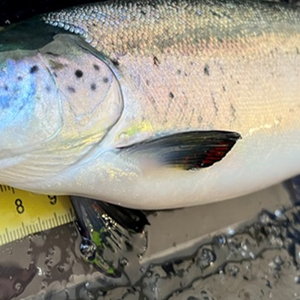Mercury in fish feed – relevance to food safety
Researchers at NIFES have demonstrated that mercury accumulates in cod fillets when the fish is fed feed containing methyl mercury. The elimination rate of the accumulated mercury was relatively slow. Research results indicate that about 40% of the mercury was transferred from feed to fillet.
What is methyl mercury?
Mercury exists in several different chemical forms in nature. The most common form and one of the most toxic forms of mercury in the marine environment is methyl mercury. EU’s upper limits for mercury in feed and fish filets apply to the sum of all mercury forms in fish, including methyl mercury.
Mercury in feed
Fish feed contains fishmeal made of fish caught in the wild. The level of mercury in fish is dependent on species, age, level in the food chain and geographic location. EU’s upper limit for mercury in fish feed is 0.1 mg/kg. This limit is not harmonised with the EU’s upper limit for methyl mercury in marine ingredients used in fish feed, which is 0.5 mg/kg. The amount of methyl mercury in fish feed differs between various types of feed, since the proportion of marine ingredients varies. According to the latest monitoring results of undesirable components in feed, the content of mercury in feed varies between 0.03 to 0.18 mg/kg feed.
Mercury in fillet
NIFES has carried out a feeding experiment using elevated levels of mercury in cod feed, given to fish for a period of three months. The aim was to determine the amount of methyl mercury absorbed by the fish, as well as the elimination rate when the methyl mercury containing feed was replaced by ordinary feed for a further three months.
The results showed a continuous increase in the concentration of mercury in the fillet as long as methyl mercury was supplemented in the feed. The concentration of methyl mercury in the feed was ten times higher than the EU limit, however the concentration in the fillet did not exceed the EU limit of 0.5 mg/kg and was 0.4 mg/kg after three months of exposure. The high level in the fish feed was not harmful to the fish.
This experiment demonstrated that both the amount of mercury in feed, and the duration of the feeding period influence the final level of mercury in the fillet. When mercury had been absorbed by the muscle, the elimination rate was very low. Based on these results it was estimated that about 40 % of the mercury that was present in the feed had been transferred to the fillet.
Carry over effect and food safety
In order to evaluate feed- and food safety, it is important to study the effects and accumulation of mercury, and other potentially harmful compounds, in living organisms. Further feeding trials should be performed using different levels of mercury in the feed throughout the production cycle of farmed fish species. Such knowledge is needed for risk assessments of contaminants in feed- and food and forms the scientific basis for risk management to protect consumer safety.
For more information cContact: Heidi Amlund, Senior Scientist, Seafood Safety, NIFES: ham@nifes.no or Anne-Katrine Lundebye Haldorsen, Head of Research, Seafood Safety, NIFES: aha@nifes.no










